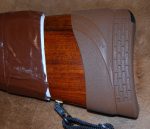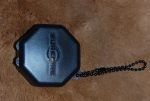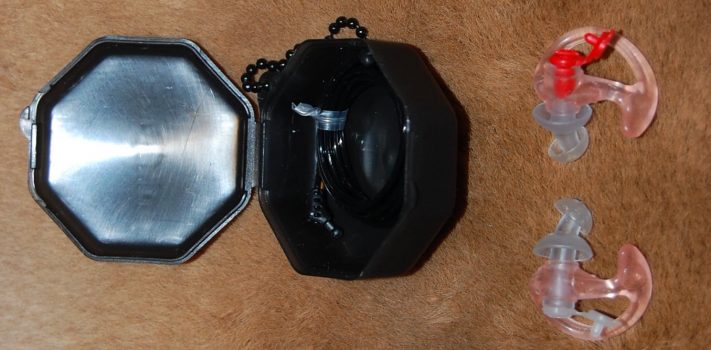In the past, I have written a little about my father’s .30-06. It is a well used Remington 742, manufactured before 1967. It has been my primary deer rifle for many years.
If I remember right, Patrick F. McManus once wrote about previously-hiked-trails becoming gradually longer and steeper, packs becoming heavier, the ground becoming harder to sleep on, and autumn evenings becoming colder. I believe that he attributed these changes to the earth shifting on its axis. Or perhaps they are due to global warming, or even COVID-19. As Mr. McManus mentioned in his story, there is at least one other theory about the cause of this phenomena, but it is too ridiculous to even mention here. In any case, the change seems to have influenced my father’s rifle as well. Over the course of time, it has begun to kick harder and harder.
Eventually, my shoulder got so sore that I decided to seek an alternative. I tested a Browning BAR Mk3 in .243 Winchester as a possible replacement. (See SurvivalBlog, October 27 and 28, 2020). The BAR is a beautiful, durable, and accurate firearm. It has just two drawbacks. One is that it is a bit pricey, with a manufacturer suggested retail price of $1,299. The second drawback is that it lacks a certain sentimental value for me. How can it compete with a rifle that once belonged to my father? In view of these drawbacks, I decided to try another alternative. I decided to try a recoil pad on the old 742.
The Recoil Pad
Since this was an experiment, I decided to go with a slip-on pad, rather than a permanent installation. After reading some customer reviews on Amazon, I decided to go with the Pachmayr Decelerator Slip-On Recoil Pad. It cost $19.89 (a price, by the way, which is quite a bit less than the cost of a BAR Mk3.)
The Decelerator Slip-On Recoil Pad comes in three sizes: small (for stocks 1 ½” to 1 5/8″ wide by 4 3/4″ to 4 7/8″ long), medium (for stocks 1 ½” to 1 3/4″ wide by 5″ to 5 3/16″ long), and large (for stocks 1 3/4″ to 1 7/8″ wide by 5 3/16″ to 5 7/16″ long). Since the stock on the 742 is 1-½” wide by 5 1/4″ long, I ordered size medium. I placed the order on a Friday, and the recoil pad arrived just three days later.
Opening the Package
 The Decelerator Slip-On Recoil Pad comes in a simple, clear plastic clam package with a printed cardstock insert containing product and sizing information. It was quick work to open the package and slip the recoil pad out. It was equally quick work to slip the recoil pad onto the stock of the 742. In the past, firing a box of ammo through the 742 was an ordeal that would leave my shoulder battered and bruised. As I prepared to try the new recoil pad, the key question was, “Will this thing tame the recoil of the 742?”
The Decelerator Slip-On Recoil Pad comes in a simple, clear plastic clam package with a printed cardstock insert containing product and sizing information. It was quick work to open the package and slip the recoil pad out. It was equally quick work to slip the recoil pad onto the stock of the 742. In the past, firing a box of ammo through the 742 was an ordeal that would leave my shoulder battered and bruised. As I prepared to try the new recoil pad, the key question was, “Will this thing tame the recoil of the 742?”
The Range Session
I took the 742 with the recoil pad installed to the range behind my barn to run a box of ammo through the rifle. I fired from a bench rest, since firing from rest tends to be a little more punishing than firing offhand.
It was a beautiful, snowy day in December. The temperature was 29 degrees, with a light snow falling, and little wind. The weather was cooler than it had been at my last range session with the 742, so I was wearing thicker layers of clothing than I had at that previous session. This would tend to help absorb some recoil. I tried to take that into account as I evaluated the effectiveness of the recoil pad.
Since the only characteristic that I needed from the ammo I was using for this particular test was recoil, I decided to use the oldest and least-expensive ammo that I had on hand. I had four rounds of some old, randomly assorted ammo in a box. I supplemented that ammo with 16 rounds of Golden Bear 145 grain Bimetal FMJ Brass Plated Case. I suspected that at least two rounds of the older ammo had corrosive primers, so I made a mental note to give the rifle an extra thorough cleaning after the range session.
The additional distance that the recoil pad added to the length of pull gave the scope slightly too much eye relief. This did not seem to negatively impact the size of my groups or change the point of impact during testing.
Results
 The recoil pad was a success. It made shooting the 742 significantly more comfortable. It made it comfortable enough that I have abandoned my search for a new deer rifle. I plan to stick with the good old 742. Initially, I plan to use the recoil pad for the bulk of my range work, but slip it off for the last few shots at the range, and for field use. This will protect my shoulder at the range, while providing a more comfortable length of pull and more appropriate eye relief in the field. If I find that solution to be unsatisfactory in the long run, I will probably shorten the stock of the 742. Then I can use either the slip on recoil pad or add a permanent recoil pad to give me the same length of pull as the 742 currently has without a recoil pad.
The recoil pad was a success. It made shooting the 742 significantly more comfortable. It made it comfortable enough that I have abandoned my search for a new deer rifle. I plan to stick with the good old 742. Initially, I plan to use the recoil pad for the bulk of my range work, but slip it off for the last few shots at the range, and for field use. This will protect my shoulder at the range, while providing a more comfortable length of pull and more appropriate eye relief in the field. If I find that solution to be unsatisfactory in the long run, I will probably shorten the stock of the 742. Then I can use either the slip on recoil pad or add a permanent recoil pad to give me the same length of pull as the 742 currently has without a recoil pad.
[JWR Adds: I generally advise folks to avoid altering a rifle, to install a recoil pad. That will greatly detract from a gun’s resale value. I cringe whenever I come across a nice old antique gun that has had its stock cut to fit a recoil pad. Before you break out your saw, ask yourself: “What will my great-great-grandchildren think of my decision?” If in doubt, then just use a slipover recoil pad.]
The Earplugs
The ancient Greek epic poem The Odyssey contains many fascinating episodes that have captured the imagination of readers and listeners for millennia. In one of these episodes, Odysseus and his crew must sail past the Island of the Sirens. The beautiful song of the Sirens would irresistibly draw those who could hear them to cast themselves into the sea and swim for shore, only to be crushed on the jagged rocks along the shore by the heavy surf. In order to protect his crew from this dismal fate, Odysseus plugged their ears with beeswax. He commanded the crew, in turn, to bind him to the mast and to refuse his pleas for release as long as they remained within hearing distance of the Island. In this manner, Odysseus became the only human to hear the song of the Sirens and survive. Thus some potential benefits of hearing protection are presented to us in a story that was already ancient even before the cornerstone of the Parthenon was laid.
My most recent experiences with hearing protection are much more prosaic. When I placed the order for the recoil pad reviewed above, the total cost initially came to less than $25. I don’t have Amazon Prime, so I wanted to add a little something to the order to get the total up over $25 in order to get free shipping. I had some SureFire EP3 Sonic Defender earplugs on my wish list, so I added them to the order. At the time when I placed my order, the earplugs cost $12.49.
 Surefire EP3 Sonic Defender earplugs are made of soft plastic and are reusable. They have a small channel in the middle of each plug. This channel is designed to allow safe-level ambient sounds and conversations to pass through while filtering out impulse noise like gunshots. There are caps that can be placed over the channels to filter out a higher level of continuous noise. With the filter caps off, the plugs are rated to reduce continuous noise by 11 decibels, while reducing impulse noise above 132 decibels by more than 23 decibels. With the filter caps on, they are rated to reduce continuous noise by 24 decibels, while reducing impulse noise above 132 decibels by more than 37 decibels.
Surefire EP3 Sonic Defender earplugs are made of soft plastic and are reusable. They have a small channel in the middle of each plug. This channel is designed to allow safe-level ambient sounds and conversations to pass through while filtering out impulse noise like gunshots. There are caps that can be placed over the channels to filter out a higher level of continuous noise. With the filter caps off, the plugs are rated to reduce continuous noise by 11 decibels, while reducing impulse noise above 132 decibels by more than 23 decibels. With the filter caps on, they are rated to reduce continuous noise by 24 decibels, while reducing impulse noise above 132 decibels by more than 37 decibels.
Opening the Package
 The earplugs come in a blister pack along with directions, a small case to hold the plugs when not in use, a lanyard that can be used to connect the plugs together, and a small chain that can be attached to a ring on the outside of the case.
The earplugs come in a blister pack along with directions, a small case to hold the plugs when not in use, a lanyard that can be used to connect the plugs together, and a small chain that can be attached to a ring on the outside of the case.
The First Range Test
I had invited some friends over for a range day, and decided to give the plugs a try. I inserted them in my ears with the filter caps off. They were quite comfortable. The included retention rings fit my concha bowls quite well and held the plugs securely in place.
It was easy to hold a normal conversation while wearing the plugs with the filter caps off. But as we began shooting, I noticed that the sound of the shots was uncomfortably loud. The plugs did not seem to give me an adequate level of protection against impulse noise. I soon added a pair of ear muffs over the earplugs. Thus my initial subjective opinion was that the earplugs did not perform adequately for range use with the filter caps off.
The Second Range Session
I next tested the earplugs at the range session in which I was testing the Pachmayr recoil pad as reported above. I tried the plugs with the filter caps on this time in order to see if I could get better results. The results were still not satisfactory. My ears began ringing immediately with my very first shot, and I again quickly found it necessary to add ear muffs.
Conclusions
I found the Pachmayr recoil pad sufficient to tame the recoil of my father’s old Remington 742. I am happy that this simple and inexpensive modification will allow me to continue to enjoy hunting with this old friend.
The SureFire earplugs, on the other hand, did not seem adequate for range use. They would have failed to protect Odysseus’ crew, either with the filter caps off or with the filter caps on. They are very comfortable to wear, and may be useful to provide some level of secondary protection under a good pair of ear muffs. But on their own, they do not seem sufficient.
Disclaimer
I did not receive any financial or other inducement to mention any products, vendors, or services in this article.










